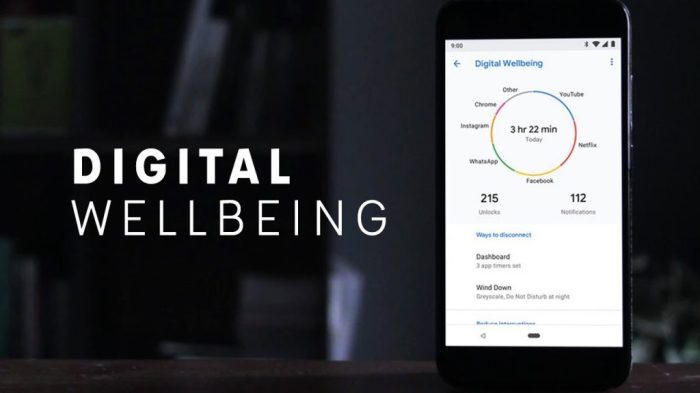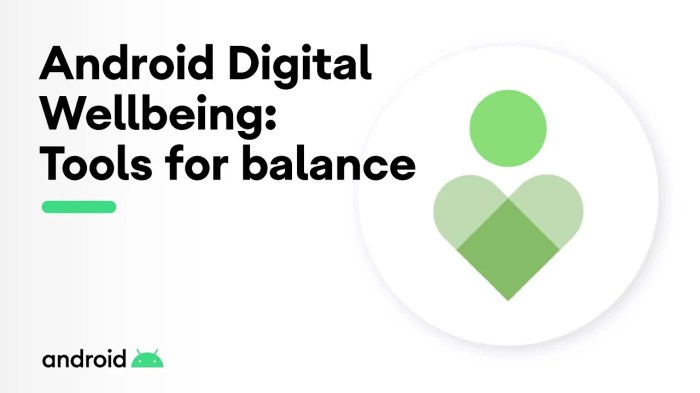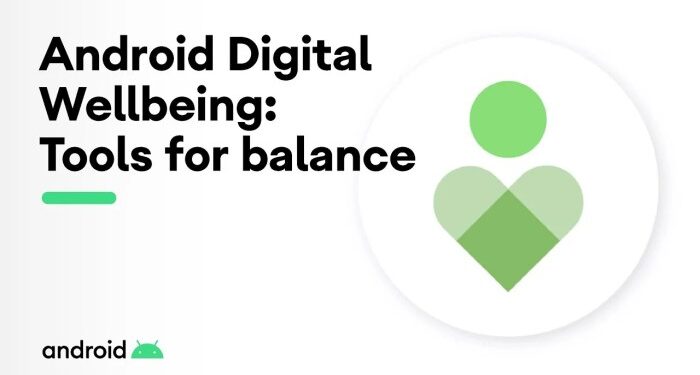Embark on a journey into the realm of digital wellbeing apps you need in 2025, where technology meets self-care in the most innovative ways. From boosting mental health to enhancing productivity, these apps are designed to revolutionize your digital experience.
Delve deeper into the world of digital wellbeing and discover how these apps can transform your daily routines for the better.
Overview of Digital Wellbeing Apps
Digital wellbeing refers to the practice of using technology in a way that promotes a healthy balance between screen time and other aspects of life. It involves being mindful of our digital habits, managing our device usage, and prioritizing our mental and physical well-being.
Importance of Using Digital Wellbeing Apps
Digital wellbeing apps play a crucial role in helping individuals maintain a healthy relationship with technology. By tracking screen time, setting usage limits, and providing mindfulness exercises, these apps empower users to take control of their digital habits and reduce the negative impact of excessive screen time on their health.
Benefits of Integrating Digital Wellbeing Apps into Daily Routines
- Increased Awareness: Digital wellbeing apps help users become more aware of their screen time habits, allowing them to make informed decisions about their usage.
- Improved Focus: By setting usage limits and implementing digital detox strategies, users can improve their focus and productivity.
- Better Sleep Quality: Limiting screen time before bed and reducing exposure to blue light can lead to better sleep quality and overall well-being.
- Enhanced Mental Health: Engaging in mindfulness exercises and taking breaks from technology can have a positive impact on mental health, reducing stress and anxiety levels.
- Healthier Relationships: By reducing screen time and being more present in real-life interactions, users can strengthen relationships with family and friends.
Current Trends in Digital Wellbeing Apps
In recent years, the use of digital wellbeing apps has seen a significant increase as people become more conscious of their screen time and overall digital habits. Let's explore some popular digital wellbeing apps available in 2021, compare their features, and look at user feedback and reviews.
Popular Digital Wellbeing Apps in 2021
There are several digital wellbeing apps that have gained popularity due to their unique features and effectiveness in helping users manage their screen time and digital health. Here are some of the most popular ones:
- 1. Forest: This app uses gamification to help users stay focused and productive by planting virtual trees when they avoid their phones.
- 2. Headspace: Known for its guided meditation sessions, Headspace helps users reduce stress and improve their overall mental wellbeing.
- 3. Screen Time: An app built into Apple devices, Screen Time provides users with insights into their screen time usage and allows them to set limits on app usage.
Comparison of Features
Each digital wellbeing app offers unique features that cater to different aspects of digital health. Let's compare the key features of the apps mentioned above:
| App | Key Features |
|---|---|
| Forest | - Gamified productivity tracking- Focus timer- Virtual tree planting |
| Headspace | - Guided meditation sessions- Mindfulness exercises- Sleep sounds |
| Screen Time | - Screen time insights- App usage limits- Downtime scheduling |
User Feedback and Reviews
Understanding user feedback is crucial in determining the effectiveness and user-friendliness of digital wellbeing apps. Here are some common themes found in user reviews for digital wellbeing apps:
- 1. Positive Impact: Many users report feeling more focused, less stressed, and better able to manage their digital habits after using these apps.
- 2. Ease of Use: Users appreciate apps that are intuitive and easy to navigate, making it simpler to incorporate digital wellbeing practices into their daily routines.
- 3. Customization: Personalization features, such as setting individual goals and preferences, are highly valued by users for a tailored digital wellbeing experience.
Emerging Technologies in Digital Wellbeing Apps
As technology continues to advance, new innovations are shaping the landscape of digital wellbeing apps
AI and Machine Learning in Digital Wellbeing Apps
Artificial Intelligence (AI) and Machine Learning are playing a crucial role in enhancing the capabilities of digital wellbeing apps. These technologies can analyze user data, behavior patterns, and health metrics to provide personalized recommendations and insights. By leveraging AI algorithms, these apps can offer tailored solutions for stress management, sleep tracking, and overall mental health improvement.
Wearable Devices for Enhancing Digital Wellbeing
Wearable devices such as fitness trackers, smartwatches, and health monitors have become integral tools in promoting digital wellbeing. These devices can track physical activity, monitor vital signs, and provide real-time feedback to users. By syncing with digital wellbeing apps, wearable devices offer a seamless way to monitor and improve one's overall health and wellness.
Virtual Reality for Promoting Digital Wellness
Virtual Reality (VR) technology is being utilized to create immersive experiences that promote relaxation, mindfulness, and stress relief. Digital wellbeing apps incorporating VR environments can transport users to calming landscapes, guided meditation sessions, or interactive activities that support mental well-being.
By immersing users in these virtual worlds, VR technology offers a unique approach to enhancing digital wellness.
Future Projections for Digital Wellbeing Apps by 2025

In the rapidly evolving landscape of digital technologies, the future of digital wellbeing apps is poised for exciting advancements and innovations. By 2025, we can expect to see a significant transformation in the capabilities and functionalities of these apps, driven by emerging technologies and changing user needs.
Integration of Augmented Reality
Augmented reality (AR) is likely to play a pivotal role in the evolution of digital wellbeing apps by 2025. AR technology can enhance user experiences by overlaying digital information onto the real world, creating immersive and interactive environments. In the context of digital wellbeing, AR can be leveraged to provide users with real-time feedback on their habits and behaviors, making it easier for them to track and manage their digital usage.
For example, AR could be used to visualize data on screen time, social media usage, or sleep patterns in a more engaging and intuitive manner. This integration of AR can make digital wellbeing apps more engaging and effective in promoting healthy technology habits.
Impact of IoT on Digital Wellbeing Tools
The Internet of Things (IoT) is set to revolutionize the development of digital wellbeing tools by 2025. IoT devices, such as smart wearables, smart home devices, and connected appliances, can collect vast amounts of data on user behavior and environmental factors.
By integrating IoT technology into digital wellbeing apps, developers can access a wealth of real-time data that can provide valuable insights into users' daily routines and habits. This data can then be used to personalize the user experience, offer tailored recommendations, and facilitate behavior change.
For instance, IoT sensors in a smart home could monitor factors like room lighting, noise levels, and air quality to optimize the user's environment for better sleep and overall wellbeing. The potential impact of IoT on digital wellbeing tools is immense, offering new possibilities for enhancing user engagement and effectiveness in promoting healthy tech habits.
Last Recap

In conclusion, the landscape of digital wellbeing apps in 2025 promises a future where technology seamlessly integrates with wellness. Stay ahead of the curve and embrace these apps to prioritize your tech health and overall well-being.
Q&A
What are the key benefits of using digital wellbeing apps?
Digital wellbeing apps can help manage screen time, reduce stress, improve sleep quality, and enhance overall mental well-being.
How are AI and machine learning transforming digital wellbeing apps?
AI and machine learning algorithms are enabling personalized recommendations, behavior tracking, and adaptive features in digital wellbeing apps.
What advancements can we expect in digital wellbeing apps by 2025?
By 2025, digital wellbeing apps may incorporate augmented reality, advanced data analytics, and seamless integration with IoT devices.





